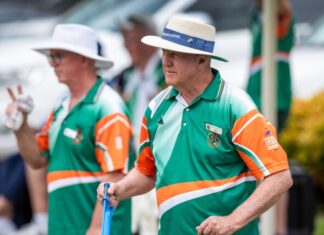By Jim Mynard
PIONEER family names figured prominently in the list of first officers elected to the Berwick fire brigade Captain F Fritzlaff, Lieutenant W Masters, Foreman E Richardson, and Secretary F Donnelly.
Others at that first meeting were A McNabb, J Reedy, R Vivian, JS Loveridge, D Chapple, G Funston, J Funston and T Smith.
These men became the first volunteer firemen of Berwick and established the brigade, which continues to provide an outstanding contribution to the community.
The early days were tough and the new brigade had to rely on its ingenuity and fundraising. In the first year social functions were organised to raise funds for the fledgling brigade to purchase firefighting equipment.
One of these, a local dance, continued on the Berwick social calendar for many years and was one of the brigade’s major sources of income.
The leadership of the brigade changed in November 1926 when F Fritzlaff stood down to the brigade foreman and E Richardson took over the helm as captain.
A year later the brigade competed in its first interbrigade competition event at Chelsea.
Many of the events the brigade competed in then are still conducted around the state.
It was difficult in the beginning for the brigade to notify its members when there was a fire.
A bell tower was built at the top of the High Street Boulevard, in the median strip between Wheeler Street and Rutland Road.
This was also the site of the brigade’s first fire station, a small weatherboard building about the size of a modern day garden shed.
The alarm message to volunteers in those days came in a code.
Vigorous ringing followed by one distinct dong meant the fire was to the left of the Princes Highway, now High Street.
Vigorous ringing followed by two distinct dongs and the fire was between Hargreaves Corner at the corner of High Street and Rutland Road and the Hotel.
Vigorous ringing followed by three distinct dongs meant the fire was from Hargreaves Corner upwards.
Get the latest news to your email inbox FREE!
REGISTER




